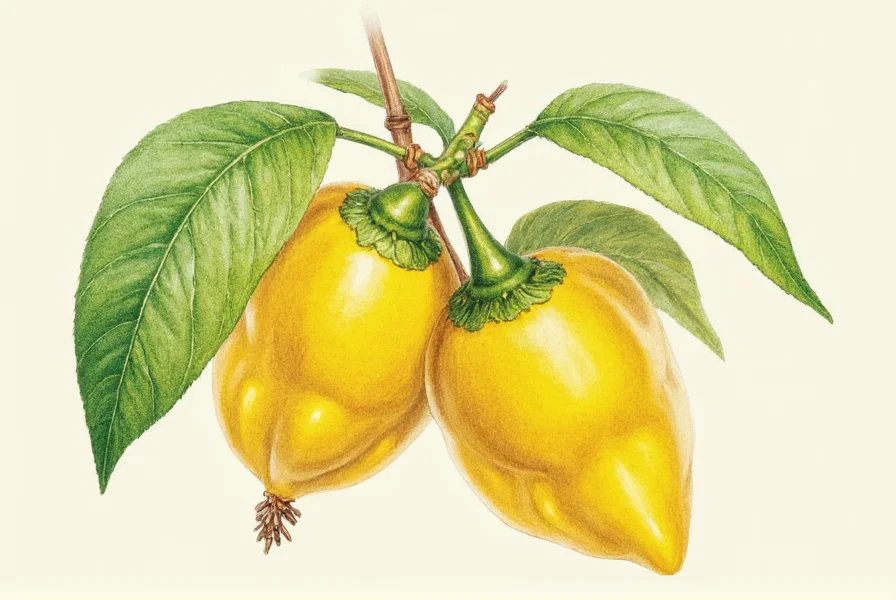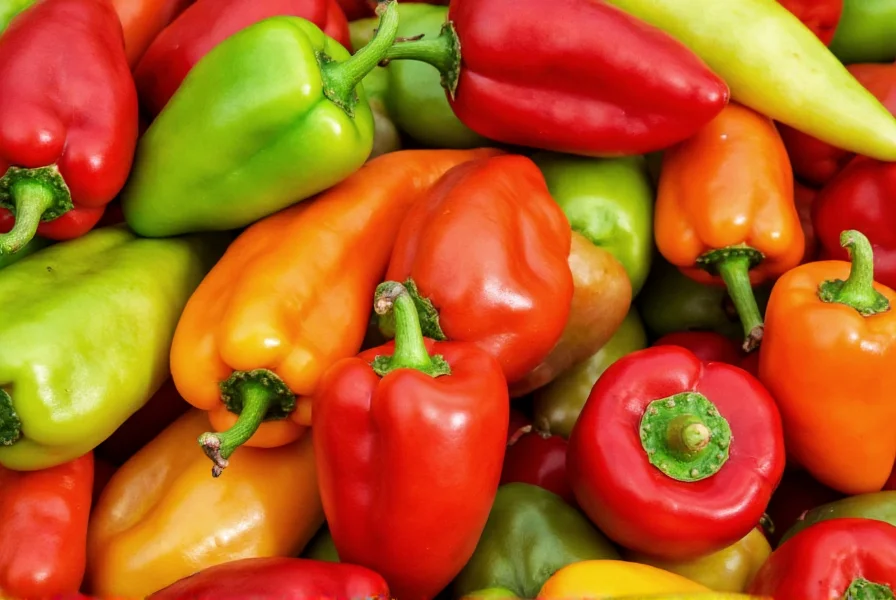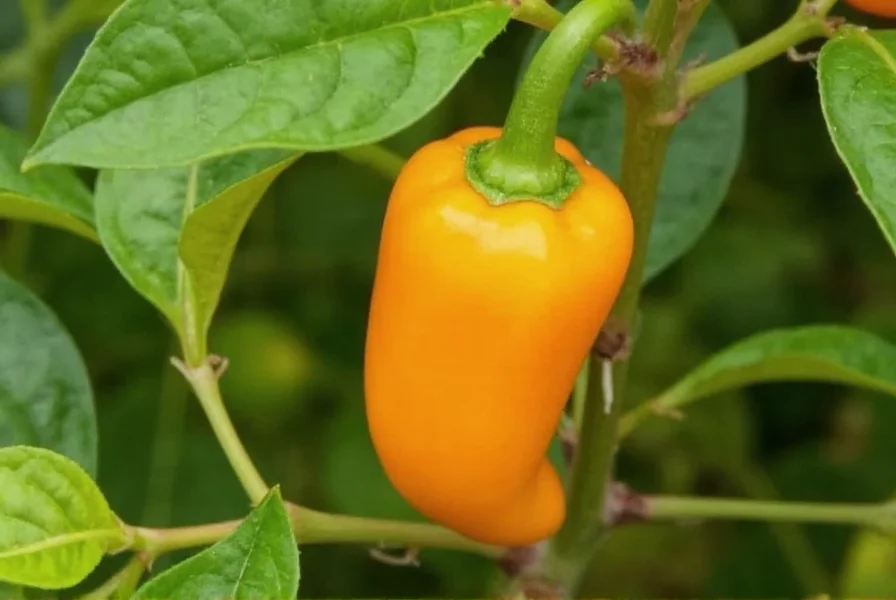Understanding whether a pepper is a fruit or a vegetable requires examining both scientific definitions and culinary traditions. The straightforward botanical answer might surprise you: all peppers, from bell peppers to chili peppers, are technically fruits. This classification stems from how plants develop their edible parts.
Botanical Definition of Fruit Explained
In botanical terms, a fruit is the mature ovary of a flowering plant, usually containing seeds. This scientific definition differs significantly from how we commonly use the word "fruit" in everyday language. When a pepper flower is pollinated, the ovary swells and develops into what we recognize as a pepper, with seeds enclosed inside. This development process perfectly matches the botanical criteria for a fruit.
Botanists classify peppers as berries, which might sound surprising since we typically associate berries with small, sweet fruits like strawberries or blueberries. In botanical language, a berry is a fleshy fruit produced from a single ovary, and peppers fit this description precisely. Other unexpected botanical berries include tomatoes, cucumbers, and eggplants.
Culinary Classification of Vegetables
Chefs and home cooks categorize foods based on flavor profile and culinary usage rather than botanical accuracy. Vegetables are typically savory or less sweet plant parts used in main dishes, while fruits are generally sweet and used in desserts or as snacks. Peppers' low sugar content and savory applications in dishes like stir-fries, salads, and stuffed preparations place them firmly in the vegetable category for cooking purposes.
This culinary classification system has historical roots. In 1893, the U.S. Supreme Court case Nix v. Hedden officially classified tomatoes as vegetables for tariff purposes, establishing that culinary usage can override botanical classification in legal and practical contexts. While this case specifically addressed tomatoes, it reflects how society generally treats many botanical fruits as vegetables.
Why the Pepper Classification Confusion Exists
The confusion about whether peppers are fruits or vegetables stems from the fundamental difference between scientific and everyday language. Botanical classification follows strict biological criteria, while culinary classification responds to practical cooking needs and cultural traditions.
| Classification Type | Fruit Criteria | Pepper Status |
|---|---|---|
| Botanical | Develops from flower ovary, contains seeds | Fruit (specifically a berry) |
| Culinary | Sweet flavor, used in desserts/snacks | Vegetable (savory usage) |
| Nutritional | High in vitamins, low in sugar | Vegetable category |
Peppers contain capsaicinoids (in hot varieties) and have relatively low sugar content compared to what we traditionally consider fruits. Their flavor profile aligns with vegetables in cooking, which is why they're grouped with other nightshade vegetables like tomatoes and eggplants in meal planning, despite their botanical classification.
Pepper Varieties and Their Classification
All pepper varieties follow the same classification pattern:
- Bell peppers - Sweet, zero capsaicin, definitely a botanical fruit
- Chili peppers - Contain capsaicin, still botanical fruits
- Jalapeños, habaneros, cayenne - All develop from flowers and contain seeds, making them fruits botanically
The heat level doesn't affect the botanical classification. Whether mild or extremely hot, all peppers share the same fruit status in botanical terms while maintaining vegetable status in culinary contexts.

Historical Context of Pepper Classification
Peppers originated in Central and South America and were introduced to Europe by Spanish explorers in the 15th century. European botanists initially classified them as a type of pepper (related to black pepper), which contributed to the naming confusion. The term "bell pepper" emerged later to distinguish the sweet varieties from their spicy relatives.
Throughout history, peppers have been treated as vegetables in agricultural practices and culinary traditions, despite their botanical classification. This practical approach to food categorization has persisted because it serves cooking and nutritional purposes better than strict botanical accuracy.
Practical Implications of Pepper Classification
Understanding that peppers are fruits botanically but vegetables culinarily has several practical implications:
- Gardening - Peppers grow on herbaceous plants (not trees), which differs from many fruits but aligns with other vegetable plants
- Nutrition - Peppers are grouped with vegetables in dietary guidelines due to their nutrient profile
- Cooking - Their vegetable classification affects how they're used in recipes and meal planning
- Storage - Peppers share storage requirements with other vegetables rather than tree fruits
For home gardeners, recognizing peppers as fruits explains why they shouldn't be planted near certain vegetables that might cross-pollinate. For nutritionists, the vegetable classification makes sense given peppers' vitamin content and low sugar levels compared to typical fruits.

Common Misconceptions About Pepper Classification
Several misconceptions persist about whether peppers are fruits or vegetables:
- Misconception: Only sweet foods can be fruits
- Reality: Botanical fruits can be sweet or savory (like peppers and tomatoes)
- Misconception: If it's used in salads, it must be a vegetable
- Reality: Culinary usage doesn't change botanical classification
- Misconception: Peppers with no heat are vegetables, while hot peppers are fruits
- Reality: All pepper varieties share the same botanical classification regardless of heat level
The key to resolving the fruit versus vegetable question for peppers lies in understanding which classification system you're using. In a biology class, peppers are fruits. In a cooking class or grocery store, they're vegetables. Both classifications are correct within their respective contexts.
Conclusion: Embracing Dual Classification
The question of whether a pepper is a fruit or a vegetable doesn't have a single definitive answer—it depends on the context. Botanically, peppers are unquestionably fruits. Culinary traditions and practical usage classify them as vegetables. This dual classification isn't unique to peppers; many foods straddle the line between botanical and culinary categories.
Understanding this distinction helps clarify why peppers appear in both fruit and vegetable sections depending on the context. Whether you're discussing plant biology, planning a garden, developing recipes, or simply settling a friendly debate, recognizing both perspectives provides a more complete understanding of these versatile plants.
Why are peppers considered fruits botanically?
Peppers are considered fruits botanically because they develop from the flower of the pepper plant and contain seeds within their structure. In botanical terms, any structure that develops from a flower's ovary and encloses seeds qualifies as a fruit, which perfectly describes how peppers form and mature on the plant.
If peppers are fruits, why are they called vegetables in cooking?
Peppers are called vegetables in cooking because culinary classification is based on flavor profile and usage rather than botanical accuracy. Peppers have a savory taste, low sugar content, and are typically used in main dishes rather than desserts, which aligns with how chefs and home cooks categorize vegetables.
Are all types of peppers classified the same way?
Yes, all pepper varieties—whether bell peppers, jalapeños, habaneros, or cayenne peppers—are botanically classified as fruits. The presence or absence of capsaicin (which creates heat) doesn't affect their botanical classification, as they all develop from flowers and contain seeds.
How does the fruit classification of peppers affect gardening?
Understanding that peppers are fruits botanically helps gardeners with crop rotation and companion planting. As fruiting plants, peppers have different nutrient requirements and pest vulnerabilities than root vegetables or leafy greens. This knowledge helps prevent soil depletion and reduces disease transmission when planning garden layouts.
Does the fruit versus vegetable classification affect pepper nutrition?
The classification doesn't change the nutritional content of peppers, but it does affect how they're categorized in dietary guidelines. Nutritionists group peppers with vegetables due to their low sugar content and high vitamin content, particularly vitamin C and various antioxidants, which aligns with vegetable nutritional profiles rather than typical fruits.











 浙公网安备
33010002000092号
浙公网安备
33010002000092号 浙B2-20120091-4
浙B2-20120091-4